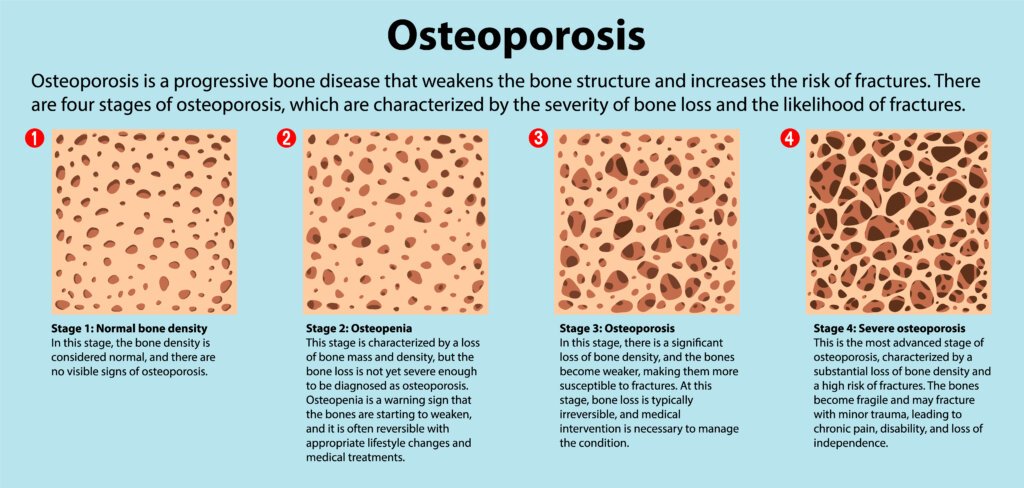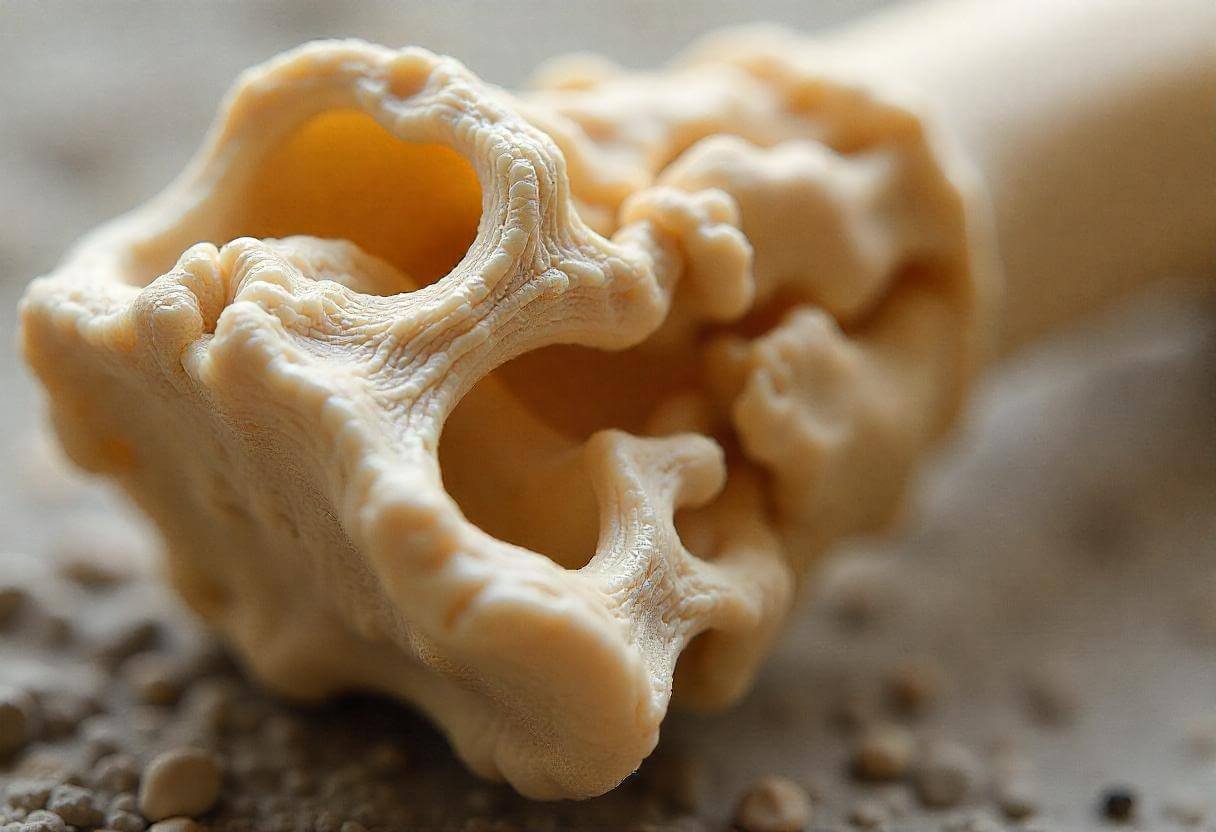Osteoporosis is a condition that weakens bones, making them fragile and more prone to fractures. It occurs when the body loses too much bone tissue or fails to produce enough new bone tissue. While millions of people worldwide suffer from this disease, it often goes undetected until a serious injury occurs. Let’s look at this condition in more detail.
What Is Osteoporosis?
Osteoporosis is a disease that results in decreased bone density and mass, leading to fragile bones. The name literally means “porous bones,” as the bones become less dense and have larger spaces within the bone matrix. This reduction in bone strength makes individuals with this condition more susceptible to fractures, particularly in the spine, hips, and wrists.
Osteoporosis is more common among older adults, especially postmenopausal women, but it can affect men as well. It’s often called the “silent disease” because it progresses without noticeable symptoms until a fracture occurs.
What Causes Osteoporosis?
Several factors can contribute to the development of osteoporosis:
1. Aging: Bone density peaks in the mid-20s and gradually declines with age. After menopause, women experience a rapid decline in bone density due to reduced estrogen levels.
2. Hormonal Changes: Decreased levels of estrogen in women and testosterone in men can increase the risk of osteoporosis. Thyroid hormone imbalances can also affect bone density.
3. Dietary Deficiencies: A diet low in calcium and vitamin D can lead to bone loss. These nutrients are essential for maintaining strong bones.
4. Sedentary Lifestyle: Lack of physical activity, especially weight-bearing exercises like walking, running, and strength training, can weaken bones.
5. Genetics: A family history of osteoporosis can increase the likelihood of developing the condition.
6. Medications and Medical Conditions: Long-term use of corticosteroids, certain cancer treatments, and conditions like rheumatoid arthritis can raise the risk of osteoporosis.

Symptoms of Osteoporosis
Unfortunately, osteoporosis often shows no signs until a bone fracture occurs. However, some warning signs may include:
– Back pain, which could be caused by a fractured or collapsed vertebra.
– Loss of height over time.
– A stooped posture or hunching of the back.
– Bone fractures that occur more easily than expected, especially from minor falls or injuries.
How to Prevent Osteoporosis
Prevention of osteoporosis should start early in life, but it’s never too late to take steps to protect your bones. Here are some effective strategies:
1. Get Enough Calcium and Vitamin D: Calcium and vitamin D are vital for bone health. Adults should aim for about 1,000 to 1,200 mg of calcium and 600 to 800 IU of vitamin D per day through a combination of diet and supplements.
2. Exercise Regularly: Weight-bearing and muscle-strengthening exercises are crucial for maintaining bone density. Activities like walking, jogging, dancing, and resistance training can help keep bones strong.
3. Maintain a Healthy Weight: Being underweight increases the risk of bone loss, while being overweight can add stress to bones, especially the spine and hips.
4. Avoid Smoking and Limit Alcohol: Smoking has been linked to reduced bone density, and excessive alcohol consumption can interfere with the body’s ability to absorb calcium.
5. Medications: For those at higher risk of osteoporosis, medications such as bisphosphonates, hormone replacement therapy, and newer drugs like denosumab may be prescribed to help maintain or increase bone density.
Diagnosing Osteoporosis
Osteoporosis is typically diagnosed through a bone mineral density (BMD) test, often done using dual-energy X-ray absorptiometry (DEXA). This test measures bone density in the spine, hip, and sometimes other areas, and compares it to a normal bone density reference.
Treatment for Osteoporosis
If you’ve been diagnosed with osteoporosis, several treatments can help manage the condition and reduce the risk of fractures:
1. Medications: Various drugs, including bisphosphonates, hormone-related therapies, and monoclonal antibodies like denosumab, can slow bone loss and strengthen existing bones.
2. Lifestyle Changes: Diet and exercise modifications can help improve bone health. Strength training, in particular, helps build muscle, which supports bones.
3. Fall Prevention: Since fractures are a major concern, it’s important to reduce the risk of falls. Ensure your living space is free from tripping hazards, and consider using assistive devices if necessary.
4. Supplements: Along with a healthy diet, calcium and vitamin D supplements may be recommended to help maintain bone strength.
Osteoporosis in Men
Although this disease is more common in women, men are not immune to the disease. In fact, approximately 1 in 5 men over the age of 50 will suffer from an osteoporosis-related fracture. Men often develop osteoporosis later in life, but it’s just as important for men to take steps to prevent bone loss.
Conclusion
Osteoporosis is a serious but often preventable condition. By taking proactive steps such as maintaining a balanced diet rich in calcium and vitamin D, staying active, and getting regular bone density tests, you can significantly reduce your risk of developing osteoporosis or manage the condition if you’ve already been diagnosed. Early detection and treatment are key to maintaining strong bones and preventing fractures, ensuring a better quality of life as you age.
If you are concerned about your risk of osteoporosis, it is important to talk to your doctor. Early diagnosis and treatment can help protect your bones and reduce your risk of fractures.
Missed our last blog? You can read it here
Need health coverage for your Staff? Check our plans here










